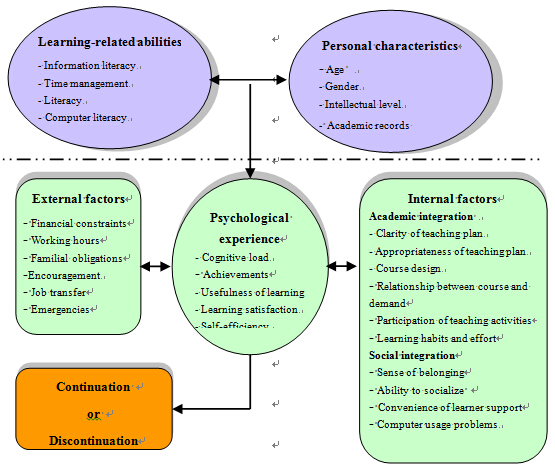
Figure 1 Attribution analysis framework of ODL dropouts (based on Rovai (2003) and Park (2009))
From: A Difficult Road of Hardship and Frustration: The Learning Experiences of RTVU Dropouts by Du Yongxin, Niu Jian and Li Ying
Ⅲ. Data collection, organization and analysis
The data used in this report was collected through interviews and questionnaires with 2,237 English major students from 14 PRTVUs, who enrolled either in a diploma programme or a bachelor’s degree programme in the spring semester of 2010. The report records dropout rates over the course of three consecutive semesters. The students who dropped out participated in online questionnaires to help researchers assess their personal situation, academic records and reasons for dropping out. Using a qualitative method, the researchers tried to include as many dropouts as possible in face-to-face individual interviews, group interviews, telephone interviews and online interviews, in order to ascertain their personal background, learning situation, thoughts on student-teacher interactions, reasons for dropping out, and any suggestions for teaching strategies they might have. Some dropouts declined to take part in the research as a result of an unsuccessful or unpleasant learning experience. As of December 2011, a total of 398 dropouts have participated in the survey, with 270 dropouts filling in the questionnaire online and 156 dropouts taking part in the interview. The research also included face-to-face interviews with 72 professional tutors and 52 teaching assistants.
This report uses the results of the online questionnaires from dropout students and interviews from dropout students, professional tutors and teaching assistants to reach its conclusion. The questionnaires, which focus on students’ ODL related abilities prior to enrollment, personal characteristics and academic situation, were processed using SPSS software. After qualitative analysis, the interviews (processed using NVivo 9 software) stress external factors after enrollment, internal factors closely related to the ODL institutions themselves and the psychological experience of the dropouts. The data used in this report was mainly derived from the NVivo 9 software.
Using a qualitative method, interviews were recorded and then transcribed. Each interview was assigned a number according to academic level, semester, unit, identity (student, professional tutor or teaching assistants) and number of participants. For example, BK-I-SH-CN-S-2 refers to 2 students who are in their first term of a bachelor’s degree programme at the Changning Branch of Shanghai TV University; BK-II-NB-SX-T-1-B-1 refers to one professional tutor and one teaching assistants of the Ningbo RTVU and who guide students that are in the second term of a bachelor’s degree programme. There were 145 completed interview documents (each interview is considered a single interview document, whether it is an individual or a group interview). The NVivo 9 software then processed these numbered documents according to their academic level, semester and unit for further qualitative analysis. This can be divided into three steps. Firstly, based on the interview outline, the researchers created five major categories: “Personal Background”, “Academic Situation”, “Student-Teacher Interaction”, “Reasons for Dropping Out”, “Teaching Suggestions”, each of which has a number of sub-categories. “Reasons for Dropping Out” includes the reasons directly responsible for the failure of the ODL experience. Previous research indicates that factors that are part of “Personal Background”, “Academic Situation”, and “Student-Teacher Interaction” also influence student dropout rates. Secondly, the researchers extracted the negative factors mentioned above and integrated them within the “Reasons for Dropping Out” category. Thirdly, based on the “Attribution analysis framework of ODL dropouts”, the researchers categorized the factors under the “Reasons for Dropping Out” category into three groups: external factors, internal factors and psychological experience after enrollment.
Take internal reasons for dropping out as an example. According to the “Attribution analysis framework of ODL dropouts”, internal factors include Academic Integration and Social Integration. Academic Integration includes “Clarity of Teaching Plan”, “Appropriateness of Teaching Plan”,“Course Design”,“Relationship between Course and Demand”,“Participation of Teaching Activities” and “Learning Habits and Effort”, while Social Integration include “Sense of Belonging”, “Ability to Socialize”, “Convenience of Learner Support” and “Computer Usage Problems”. In order to further clarify the individual factors, we summarized the sub-categories and then combined similar ones: “Clarity of Teaching Plan” was combined with “Appropriateness of Teaching Plan” to create “Clarity and Appropriateness of Teaching Plan”; “Course Design” and “Relationship between Course and Demand” were combined to create “Course Design”; “Participation of Teaching Activities” was incorporated into “Learning Habits and Effort”. “Computer Usage Problems” was excluded, as it is not mentioned very often. Finally, we established a pattern for ODL dropout attribution (each piece of information was assigned a reference point according to the number of times that factor was mentioned in the interview).